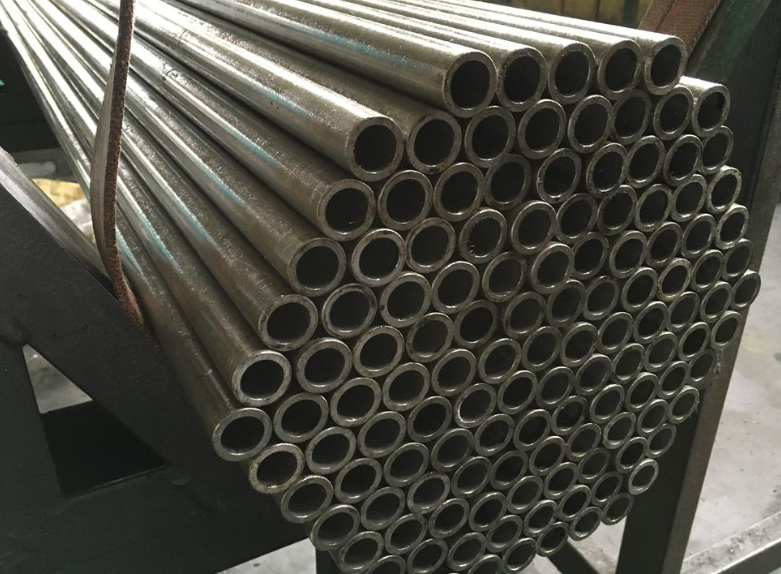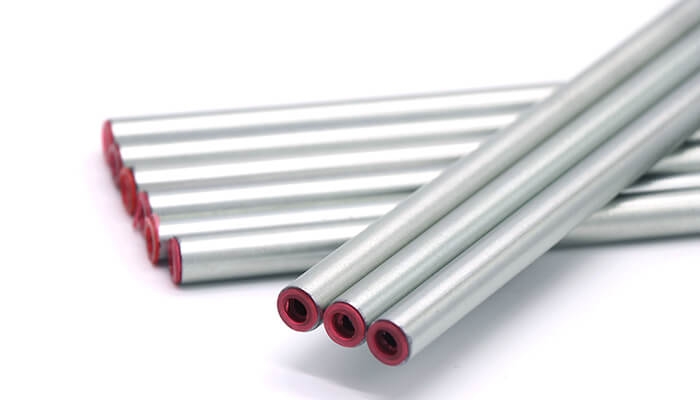Hydraulic Tubing Steel And Temperature: Impacts On Performance
-
2023-04-23
-
Hydraulic tubing steel is an important component in hydraulic systems used in various industrial applications. The tubing steel is responsible for transferring fluid between different components of a hydraulic system, making it a crucial factor in the performance and efficiency of the system.
However, one important factor that can impact the performance of hydraulic tubing steel is temperature.
In this article, we will explore the impact of temperature on the performance of hydraulic tubing steel and how it can affect the overall performance of a hydraulic system.
Understanding Hydraulic Tubing Steel:
Hydraulic tubing steel is a type of tubing made of steel that is designed to withstand high pressure and high temperatures. It is used in hydraulic systems to transfer fluid from one component to another.
Hydraulic tubing steel comes in a variety of sizes and thicknesses and can be made from different types of steel, depending on the specific requirements of the application.
One of the most important characteristics of hydraulic tubing steel is its strength. The tubing must be able to withstand high pressure without buckling or breaking. In addition, hydraulic tubing steel must also be able to withstand high temperatures without losing its strength or becoming brittle.

Impact Of Temperature On Hydraulic Tubing Steel:
Temperature is one of the most important factors that can impact the performance of hydraulic tubing steel.
The Ideal Operating Temperature Range
The ideal operating temperature range for hydraulic tubing steel is between -40°C to 120°C. Operating outside of this temperature range can affect the performance and efficiency of the hydraulic system.
High Temperatures
High temperatures can cause hydraulic tubing steel to become weaker and more susceptible to failure under pressure. It can also cause the tubing to expand or contract, which can affect its ability to transfer fluid.
Low Temperatures
Low temperatures can cause hydraulic tubing steel to become brittle and more susceptible to failure under pressure. It can also cause the tubing to contract, which can lead to leaks in the hydraulic system.
Factors That Affect the Performance Of Hydraulic Tubing Steel:
Several factors can affect the performance of hydraulic tubing steel. These include:
Material Selection:
The type of steel used to make the hydraulic tubing can have a significant impact on its performance. Different types of steel have different properties, such as strength, ductility, and thermal conductivity, that can affect the performance of the tubing under different temperatures and pressure conditions.
Wall Thickness:
The thickness of the tubing wall can also affect its performance. Thicker walls can provide greater strength and durability, but can also increase the weight and cost of the tubing.
Corrosion Resistance:
It is prone to corrosion, which affects its performance and service life. Choosing a tubing material with good corrosion resistance will help extend the life of your hydraulic system.
Surface Finish:
The surface finish of the tubing can also impact its performance. A smooth surface finish can help to reduce friction and improve fluid flow, while a rough surface finish can increase friction and reduce efficiency.
Here we recommend a professional hydraulic tubing steel manufacturer for you: Global Precision Steel Tube. They are very suitable for various harsh industrial environments such as hydraulic systems. Let’s take one of the hydraulic tubing steel products as an example to show their product advantages:
Global Precision Steel Tube offers EN 10305 Galvanized Hydraulic Seamless Steel Tube as a reliable and efficient solution for hydraulic systems. This product has several advantages that make it an ideal choice for industrial applications. Here are three advantages of this product for hydraulic systems:

Resistance to Corrosion and Rust
The EN 10305 Galvanized Hydraulic Seamless Steel Tube has a zinc coating of 8 to 12μm, which provides it with excellent resistance to corrosion and rust. This makes it suitable for use in harsh industrial environments where exposure to moisture and other corrosive substances is common.
High Dimensional Accuracy and Excellent Wall Finish
The EN 10305 Galvanized Hydraulic Seamless Steel Tube undergoes a process of perforation, pickling, phosphating, cold drawing, cold rolling, annealing, and anaerobic annealing, which results in high dimensional accuracy and excellent internal and external wall finish. This makes it an ideal choice for hydraulic systems where precision is essential.
Excellent Mechanical Properties and Metallographic Structure
The EN 10305 Galvanized Hydraulic Seamless Steel Tube undergoes an anaerobic bright heat treatment (NBK), which ensures that it maintains its original rolling accuracy and smoothness. This treatment also gives the steel tube excellent mechanical properties and metallographic structure, making it strong and durable enough to withstand the pressure and temperature fluctuations of hydraulic systems.
Best Practices For Using Hydraulic Tubing Steel:
To ensure the best performance and efficiency of hydraulic tubing steel, several best practices should be followed:
Use the Right Material:
Choosing the right type of steel for hydraulic tubing is crucial to its performance. Factors such as the temperature range, pressure requirements, and corrosion resistance should be considered when selecting the material.
Use the Right Wall Thickness:
Choosing the right wall thickness for the tubing is also important. Thicker walls can provide greater strength and durability, but can also increase the weight and cost of the tubing.
Maintain Proper Surface Finish:
Maintaining a smooth surface finish on the tubing can help to reduce friction and improve fluid flow, which can improve the efficiency of the hydraulic system.
Inspect and Replace Regularly:
Its regular inspection and maintenance are very important to ensure its performance and efficiency. Any signs of wear or damage should be addressed immediately, and piping that has reached the end of its useful life should be replaced.
Monitor Temperature and Pressure:
Monitoring the temperature and pressure of the hydraulic system is crucial to ensure that the tubing is operating within its ideal range. Operating outside of this range can lead to decreased performance and even failure.
Final words:
It is an essential part of hydraulic systems used in various industrial applications. Remember to check regularly and replace the pipes as needed to avoid any potential failures or problems.
Overall, understanding the impact of temperature on hydraulic tubing steel is important for ensuring the longevity and optimal performance of your hydraulic system.
By taking the time to select the right materials and maintain proper maintenance practices, you can extend the lifespan of your system and prevent costly downtime.



